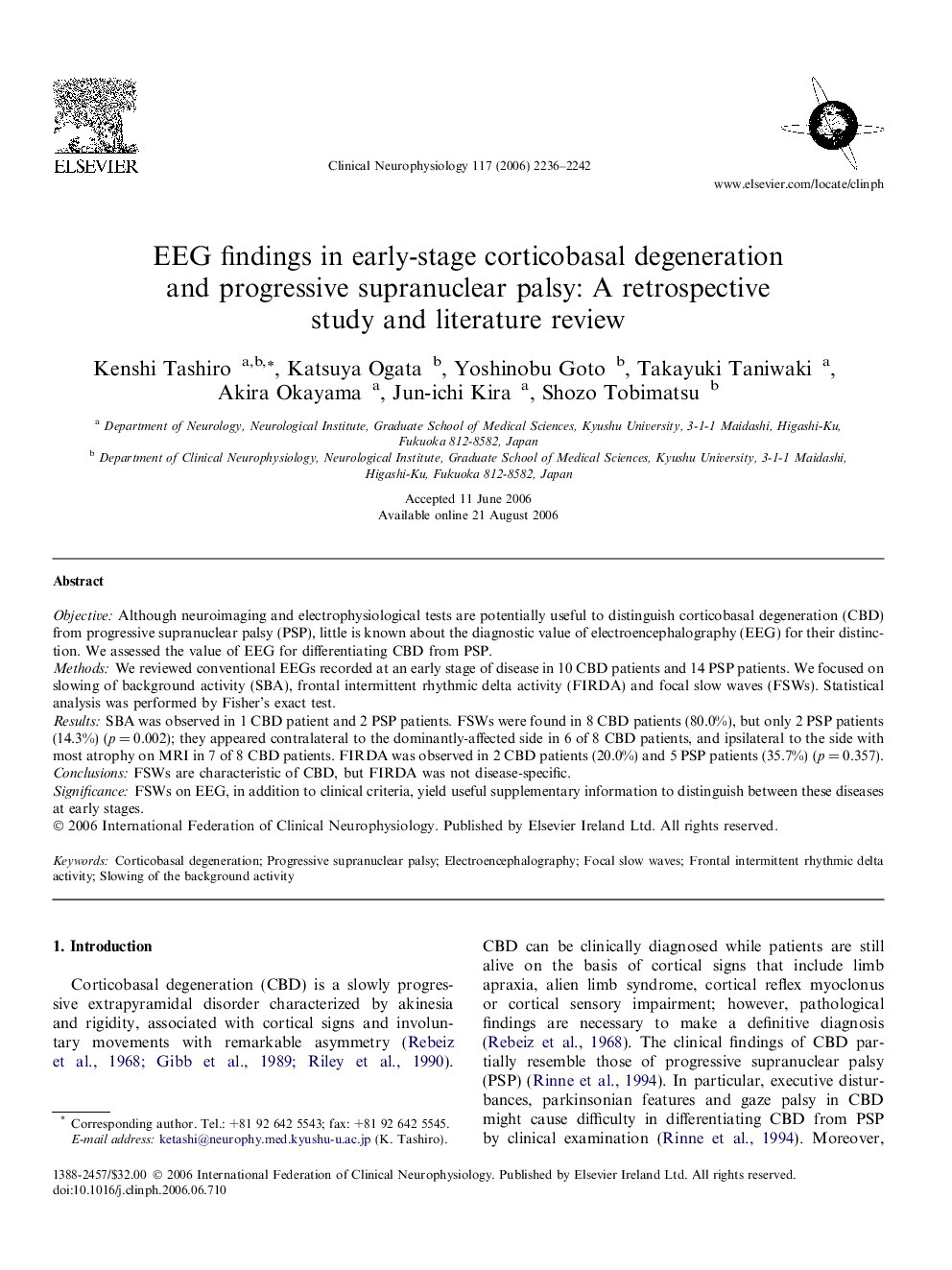| Article ID | Journal | Published Year | Pages | File Type |
|---|---|---|---|---|
| 3047672 | Clinical Neurophysiology | 2006 | 7 Pages |
ObjectiveAlthough neuroimaging and electrophysiological tests are potentially useful to distinguish corticobasal degeneration (CBD) from progressive supranuclear palsy (PSP), little is known about the diagnostic value of electroencephalography (EEG) for their distinction. We assessed the value of EEG for differentiating CBD from PSP.MethodsWe reviewed conventional EEGs recorded at an early stage of disease in 10 CBD patients and 14 PSP patients. We focused on slowing of background activity (SBA), frontal intermittent rhythmic delta activity (FIRDA) and focal slow waves (FSWs). Statistical analysis was performed by Fisher’s exact test.ResultsSBA was observed in 1 CBD patient and 2 PSP patients. FSWs were found in 8 CBD patients (80.0%), but only 2 PSP patients (14.3%) (p = 0.002); they appeared contralateral to the dominantly-affected side in 6 of 8 CBD patients, and ipsilateral to the side with most atrophy on MRI in 7 of 8 CBD patients. FIRDA was observed in 2 CBD patients (20.0%) and 5 PSP patients (35.7%) (p = 0.357).ConclusionsFSWs are characteristic of CBD, but FIRDA was not disease-specific.SignificanceFSWs on EEG, in addition to clinical criteria, yield useful supplementary information to distinguish between these diseases at early stages.
